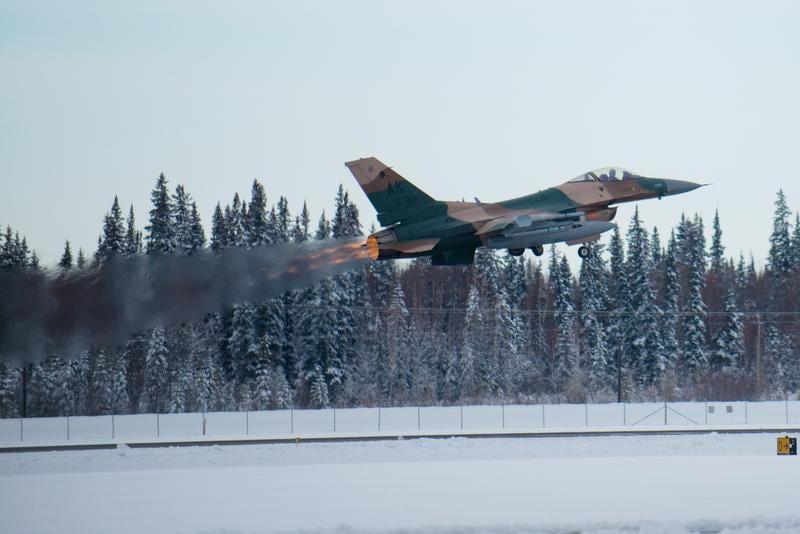The Arc'teryx LEAF Naga Hoody is a versatile three-season-plus piece that works as a base-, mid- or non waterproof outer-layer. It began as a base layer project for Canadian SOF. It's made from dense Polartec Power Stretch fleece and designed specifically for wear beneath body armor in very cool to frigid environments. As a base layer beneath body armor, it should keep you warm while active at temps around 15-20f degrees. It can be combined with a mid-layer and/or outer-layer if you're not active, or temps drop further. Perfect for predawn raids in cold weather when there will be lots of waiting around at a rally point with brief, but intense actions on the objective. It also serves well as a trim-fitting, sweater for any cold weather activity.
[nggallery id=586]
more
As for competitors, there are plenty of fleece cardigans and pullovers on the market, but I cannot think of a similar garment that offers the tactical professional all the features of the Naga Hoody.
The Naga is made primarily from Polartec Power Stretch with strategically placed Hardface reinforcement in exposed areas. This fleecy fabric is somehow much warmer than it should be, based on the thinness of the material. The fabric is dense for a fleece and traps warmth effectively while stretching to provide warmth with nearly zero bulk. On the face, the sleek fabric is also wind resistant --great for a dry or drizzly weather outer-layer. The Hardface coated areas will shed water, but other untreated areas will wet out in a shower. Inside, it's fuzzy, providing warmth and wicking sweat when worn directly on skin. Stopping here and making a Power Stretch long-sleeve t-shirt would be enough to keep you warm, but Arc'teryx took the Naga far beyond baseline expectations.
I've been wearing one since last year and it's seen many days of use as a base-layer and a mid-layer worn with and without body armor. It was an ideal companion in the mountains during a week-long adventure when I wore it nearly all day, everyday. It was worn from four-wheeling at dawn to beer o'clock around the campfire --even in my sleeping bag when temperatures dived well below freezing. Living in a garment like this really makes you love it or hate it.
The Naga is cut as a base layer. It's a snug fit when wearing your normal size. I ended up with a large, one size up from my normal size, and found it still worked well as a base layer while offering the option of wearing it as a comfortable mid-layer. The only place I noticed the size difference was in the length at the waist. It runs a little long, but it's designed to be tucked in. I'm not going to complain about something that provides additional coverage and keeps my ass warm.
Unique Features: While few of the the Naga's features are unique on their own, taken as a whole, the garment is unique in it's combination of features designed for the battlefield.
Starting with body armor compatibility, the zipper at the throat doesn't dig into your chest when worn under soft armor or a plate carrier. It's a short zipper, sized just big enough to get a head through. It's a trade-off, favoring chafe reduction over venting performance. The hood is cut very slim and can take the place of a fleece beanie worn beneath a helmet. It's also separate from the collar so it can be worn with the hood laying flat and out of the way, even tucked under the back armor carrier, without getting in the way, become a bulky nuisance or restricting movement.
In addition to the hood, maximum coverage is achieved using a longer cut in the hem as well as thumb-holes. The ninja sleeves keep the cuffs from riding up and are cut to match the angle of a hand gripping something, say a firearm or vehicle handlebar grip.
The body fabric is regular Power Stretch but it's coated with Hardface on the sleeves and hood for abrasion resistance where it will likely not be covered by armor. The seams are placed to keep them away from body armor contact points and are entirely eliminated in some places. For example, Arc'teryx used glue in place of stitching to attach the Schoeller Tech stretch woven fabric for chest pocket.
The Naga is darn light and thin for the warmth it provides. It doesn't take up much room in a pack, but it won't compress down like a puffy layer. Wearing it around as a casual piece, it's warmth is evident. It's too warm to be worn as a light sweater in 50 degree temps, though it's interesting to see your sweat come through and wet the face of the fabric. When it gets cold, though, the Naga is great as a casual-but-technical layer. It's perfect for many cold weather stop-and-go activities. It's available in Wolf (gray) and Crocodile (tan-ish) and neither looks out of place when worn to the bank or range.
Pros:
- Fit and features designed specifically for use with armor
- Cut allows use as base- or mid-layer
- adaptable warmth for use on or off the battlefield
Cons:
- Fleece fabric attracts pet hair
- Synthetic fabric can be singed easily. Be careful around campfires
Conclusion:
As a battlefield garment, there's are no good reasons not to recommend the Naga Hoody as a base- or mid-layer for anyone working mixed-intensity activities in cold environments. As always, value is in the eye of the consumer. At $200, the Naga is not an inexpensive garment. But, it is highly technical, with unmatched features and construction. And, it's designed by Canadians; which is the ancient North American translation of "people with intimate knowledge of cold weather." Look for more information on the Naga Hoody on Arc'teryx LEAF's website.




